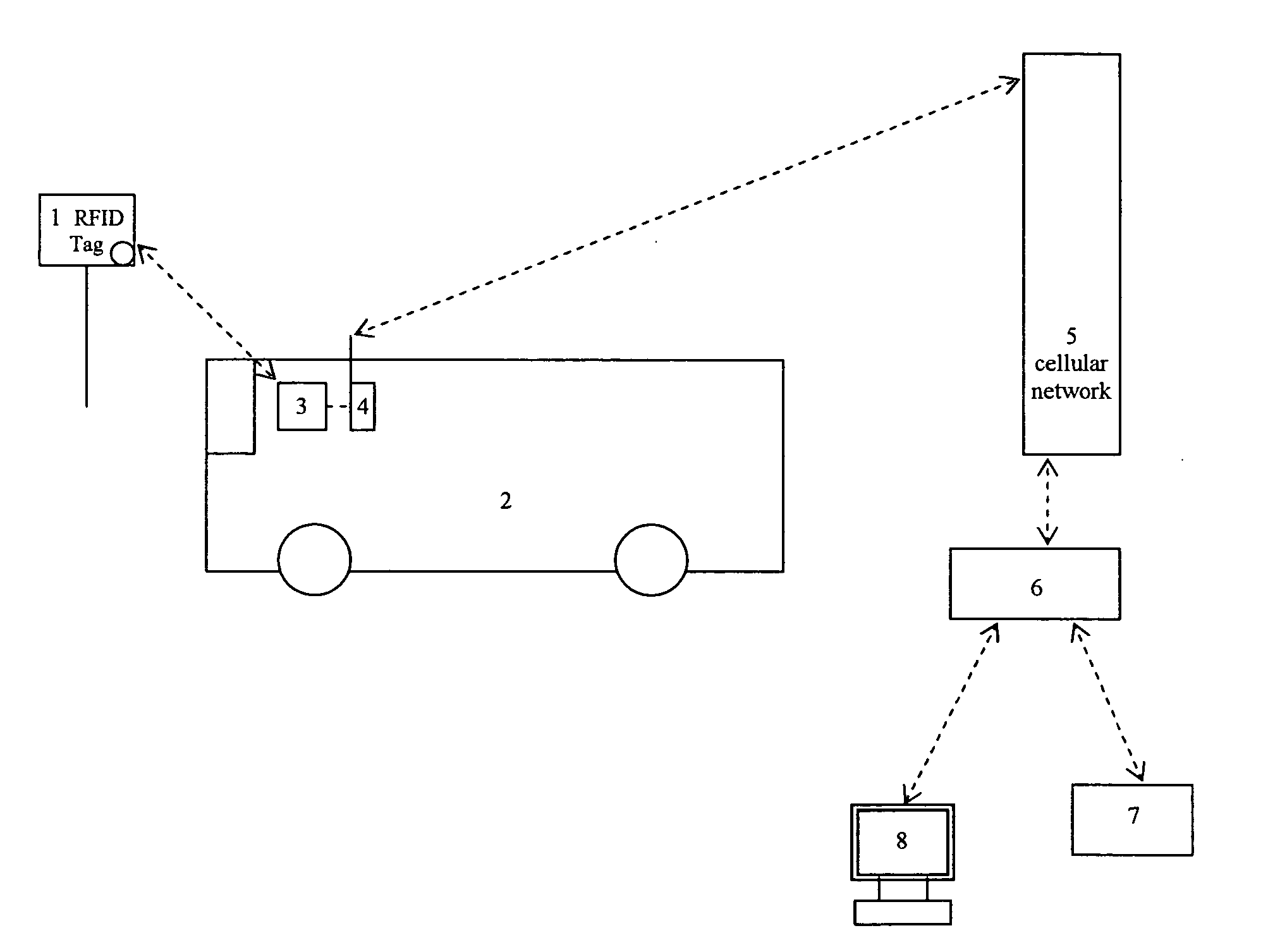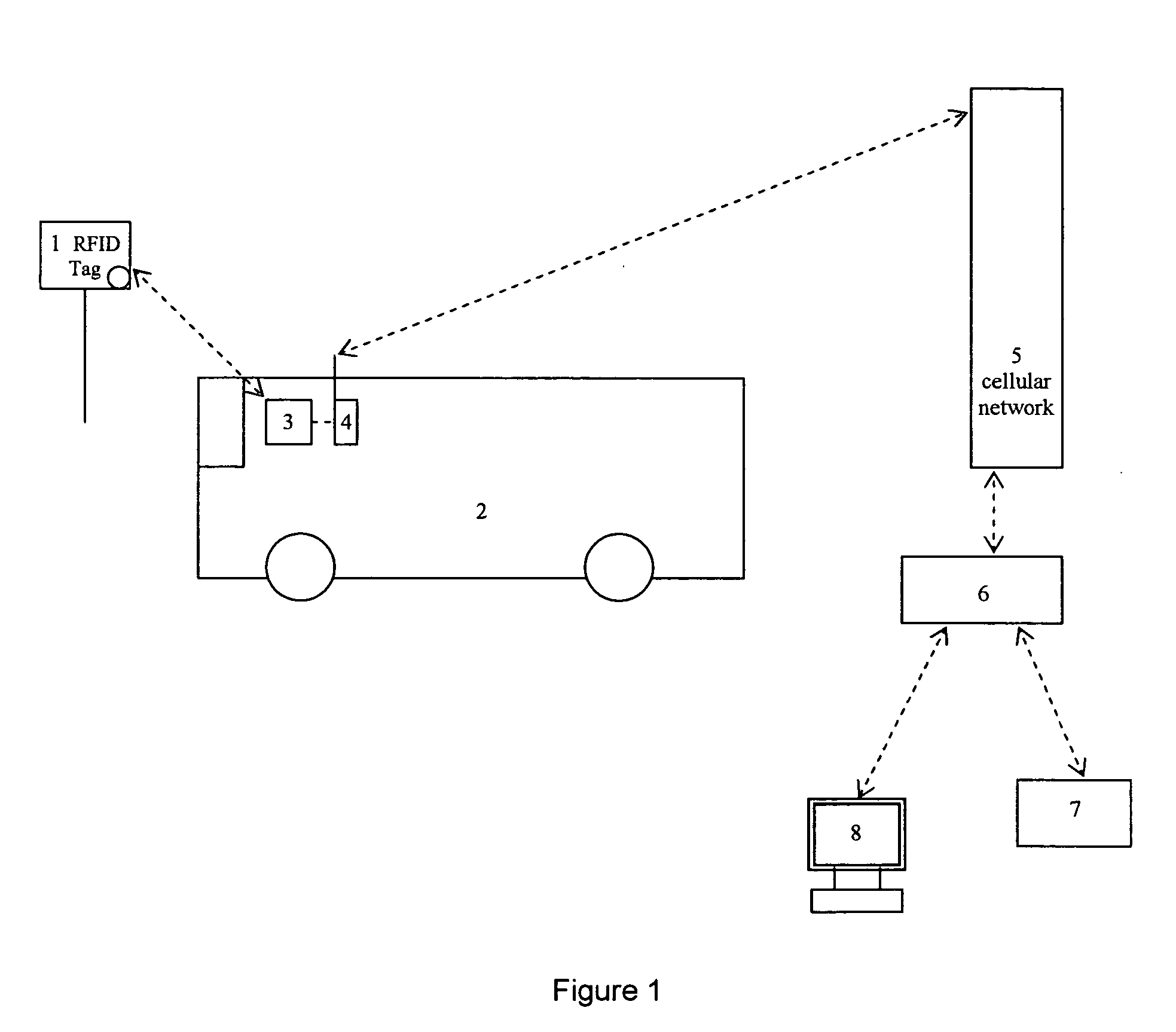RFID vehicle-tracking system using mobile transceivers and stationary transponders
a technology of vehicle tracking and mobile transceivers, applied in the direction of radio transmission, instruments, electrical equipment, etc., can solve the problems of extensive ramifications of a well-run bus system with real-time vehicle location
- Summary
- Abstract
- Description
- Claims
- Application Information
AI Technical Summary
Problems solved by technology
Method used
Image
Examples
Embodiment Construction
[0027]FIG. 1 shows a representation of our RFID Vehicle-Tracking System. In this version, a bus is tracked by logging its location, vehicle identifier, and the current time as it passes each bus stop on its route. Each bus stop contains a transponder or RFID Tag (1), which can be read by the RFID Reader, mobile transceiver, or interrogator (3) which is mounted on the vehicle or bus (2). When the RFID tag (1) is read by the RFID reader (3), the tag's location data is sent to the mobile communication device or cell phone (4) which logs the location, vehicle identifier, and the current time and sends that information via a wireless communication method or cell network (5) to the Internet or computer network (6). A data storage and processing device or computer (7), which is connected to the Internet (6) will then receive the transmission and store the vehicle identifier, time, and location data, and process the data so route- and schedule-related information can be displayed in a usefu...
PUM
 Login to View More
Login to View More Abstract
Description
Claims
Application Information
 Login to View More
Login to View More - R&D
- Intellectual Property
- Life Sciences
- Materials
- Tech Scout
- Unparalleled Data Quality
- Higher Quality Content
- 60% Fewer Hallucinations
Browse by: Latest US Patents, China's latest patents, Technical Efficacy Thesaurus, Application Domain, Technology Topic, Popular Technical Reports.
© 2025 PatSnap. All rights reserved.Legal|Privacy policy|Modern Slavery Act Transparency Statement|Sitemap|About US| Contact US: help@patsnap.com


